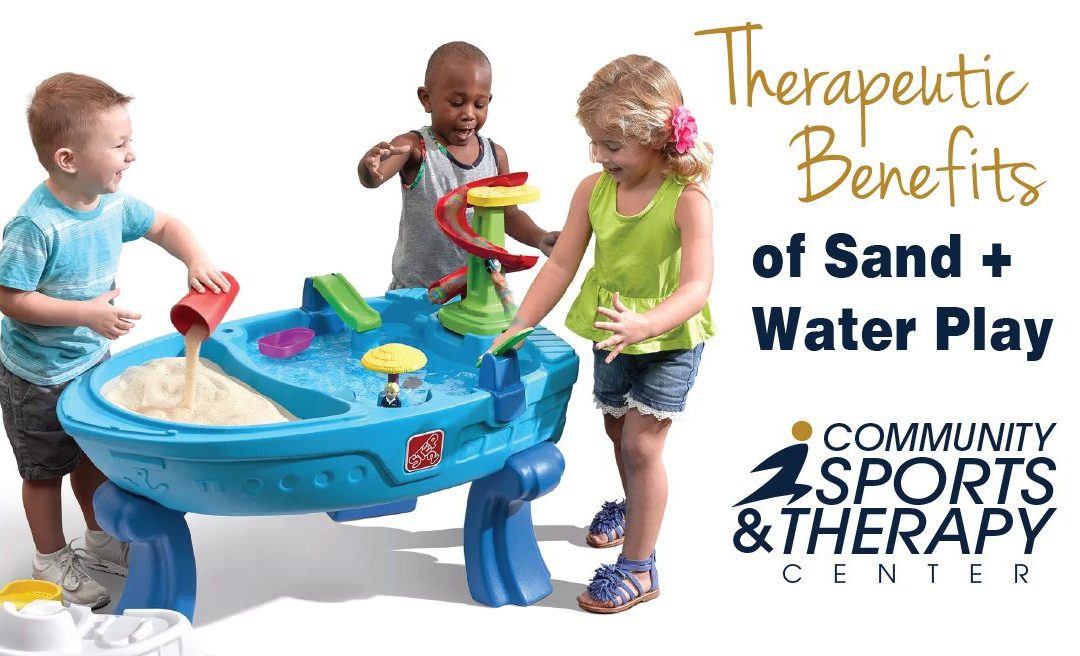Sand and water play are excellent ways for children to express themselves and provide a multitude of therapeutic benefits that can help with developmental delay and sensory processing difficulties. Play is the work of children and should not be underestimated.
The staff of pediatric therapists at Community Sports and Therapy Center have seen numerous benefits of these activities for tactile exploration and much more.
“One of the best things about sand and water play is that it is beneficial for a wide age range of children,” said Julie Duncan, PT, MPT, Pediatric PT Director. “You can use some of the same toys for your one-year-old as your five-year-old.”
Below are some examples of benefits of sand and water play.
Gross & Fine Motor Skills.
When your toddler uses buckets and scoops to pour sand into a toy truck it helps develop his gross motor skills and strengthens his muscles. The effort of grasping and holding the shovel, pouring and stirring water, and squeezing toys will develop his fine motor skills.
“Some children may have difficulty holding a pencil, but find it easier to write in the sand,” said Mindy Muhlenkamp, OTR/L, Pediatric OT Director. “It also aids in hand-eye coordination and the use of both hands together to play.”
Sensory Experiences.
Water and sand are great way to provide sensory experiences for children as they introduce them to different textures such as slippery, slimy, gritty. Both sand and water allow children to learn with hands-on materials to take in new information through their senses which can assist children with calming down their bodies.
Social Skills.
Sand and water play also allows your child to develop his social skills by learning to share his toys and space, wait his turn and make conversation. It encourages role play and crucial social skills like cooperation and sharing.
Helps Express Emotions.
Sand and water play are valuable tools for personal and emotional development. The tactile interaction can help reduce tension and anxiety in children who are introverted and timid. It can help hyperactive children focus and slow down by creating a scene or story in the sand. It helps them focus on the task at hand and improves concentration. Sand and water play allow your child to communicate nonverbally and helps release energy.
Learning Through Play.
This play also helps develop cognitive skills such as math and problem solving. It allows them to explore a substance and make discoveries about it and teaches basic mathematics such as full, empty, half, less and can help measure and compare volumes. Building a sand castle can help build your child’s imagination and challenge her creativity.
“Sand and water play aides in language development by learning new words as they play such as whisk, depth, drenched, pour, funnel, and sieve,” states Andrea McGee MA, CCC-SLP, ST Director. “Getting away from structured learning allows for natural language skills to develop.”
To find out more about the pediatric therapy program at Community Sports and Therapy Center visit our website www.cstcenter.com or call 419-586-2077.

